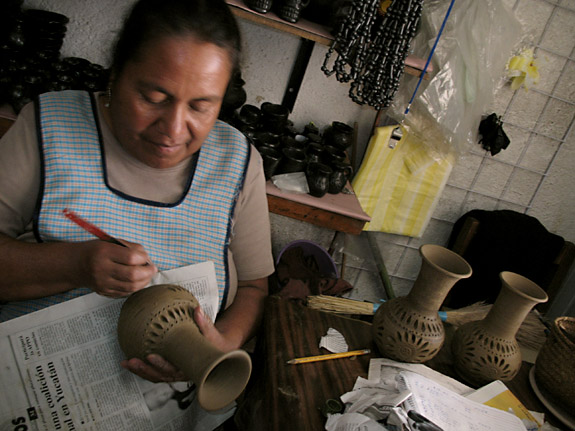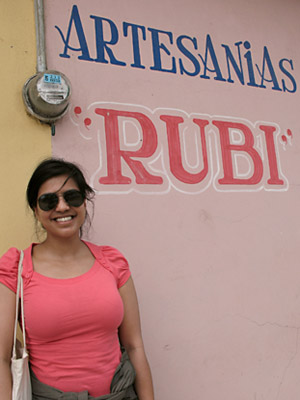Barro Negro in San Bartolo
We'd been seeing the pearly-black intricately-carved barro negro pottery all over town, but after the pleasant experience of directly supporting women artisans by shopping at MARO, we felt we would similarly prefer buying pottery from the source.
 Armana y Lopez bus terminal |
This small town seemed full of family-run pottery shops, but the bus stopped in front of the main artisans market, so we confined ourselves there. We popped our heads into a few shops, marveling that the delicate work cost a mind-boggling $2 - $8 per pot, and then met the sweetest lady.

I'm a potter myself, so I always have a special interest in seeing artists at work; I was mildly disappointed there were no studios near the market. But when we inquired about seeing the pottery being made, the lady smiled and indicated the boxes at her feet loaded with vases in the leather-hard stage. She proceeded to scrape, carve and poke designs into a vase with pencils and other simple tools, and completed 3 new pots while we watched slack-jawed. Her dexterity was amazing!

She explained that the vases were actually hand-built, which surprised me; they were so uniform I couldn't believe they weren't thrown on a wheel. She told us her whole family knew how to make barro negro. Would have loved to learn more about the black glaze, but without a way to actually demonstrate, we probably wouldn't have understood her explanation. [I read later that it's not a glaze; the clay turns black when fired and the pieces are then burnished until shiny].
 Rubina spots her name |
Another shop featured black ceramic jewelry, which was quite cheap and great as unique gifts for our friends. There were necklaces of varying lengths, some with linked circles, some with pebble-shaped beads, some with flat chip beads. These beautiful and unusual pieces garner all of us plenty of compliments back home.
A word of warning: none of the artisans used real padding other than newspaper. This is pretty typical wrapping for potters but far-flung tourists will need to take extra care. I was lucky and was allowed to bring my small duffel on board the bus back to Mexico City; Rubina had bought one of those plastic striped string bags from the market to hold her barro negro, which the attendants deemed too large to fit on board. Sadly one of her vases broke while in the storage compartment.